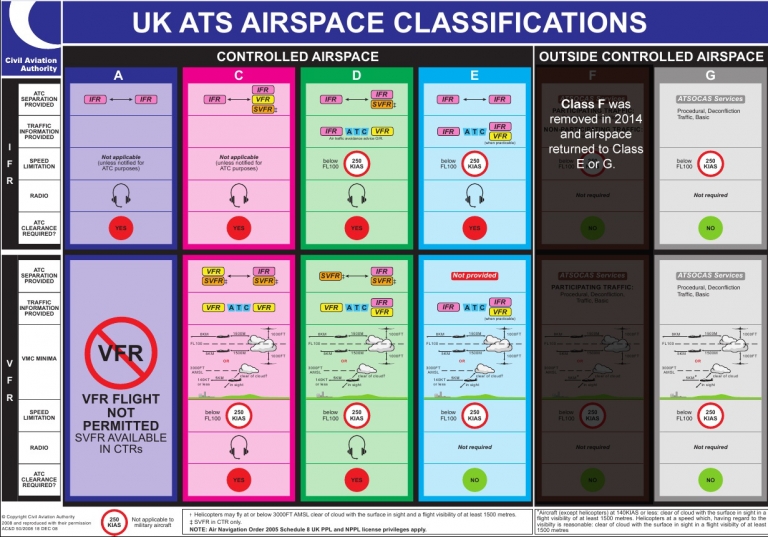 In the UK, we have 5 different classifications of airspace in use; A, C, D, E, G. The classification of the airspace within a FIR determines the flight rules which apply and the minimum air traffic services which are to be provided. These allow us to better manage traffic flow, and ensure only the appropriate aircraft are in places they should be in.
In the UK, we have 5 different classifications of airspace in use; A, C, D, E, G. The classification of the airspace within a FIR determines the flight rules which apply and the minimum air traffic services which are to be provided. These allow us to better manage traffic flow, and ensure only the appropriate aircraft are in places they should be in.
The 5 classifications can be broken down into Controlled Airspace (A, C, D & E) and Outside Controlled Airspace (G). The use of Class F airspace was stopped in 2014, and as such Class G is the only OCAS classification.
At first glance, the chart on the right can seem daunting. It can be broken-down into smaler chunks, so that it's easier to deal with.
The chart is divided top-bottom with IFR-VFR. This refers to the Instrument and Visual Flight Rules that an aircraft may fly under. Left and Right sides are divided into CAS and OCAS. Once again, only one class of airspace is available outside of controlled airspace.
Let's take a deeper dive into these classifications, and see what they're all about.